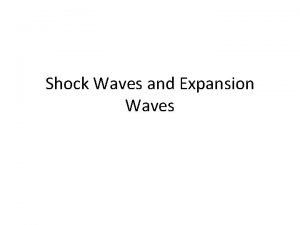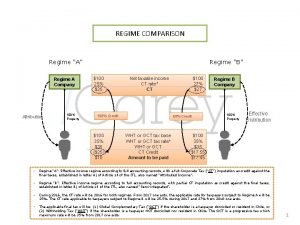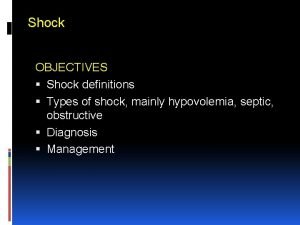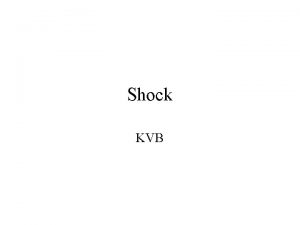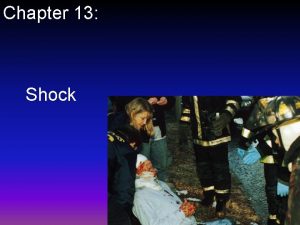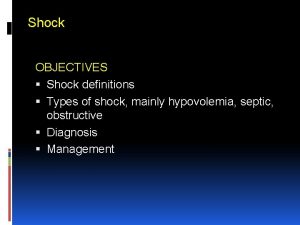Temperature analysis in the shock waves regime for


















- Slides: 18

Temperature analysis in the shock waves regime for gas-filled plasma capillaries in plasma-based accelerators A. Biagioni On behalf of SPARC_LAB collaboration ICFDT 5 3– 5 October 2018, LNF Frascati Angelo. Biagioni@lnf. infn. it

Outline § Motivations § § Plasma discharge capillaries as accelerating and focusing modules Gas-filled capillary plasma source § § Experimental set-up Effect on electron beam parameters § Shock Wave method to measure plasma properties § Conclusions ICFDT 5 3– 5 October 2018, LNF Frascati Angelo. Biagioni@lnf. infn. it

Plasma discharge capillary applications ne = 1016 -1018 cm-3 V = 15 -20 k. V Imax = 240 A R = 500 μm L = 1 -3 cm PWFA Plasma lens Focusing (Compactness) 90 μm 25 μm Bφ > 500 T/m Angelo. Biagioni@lnf. infn. it

Transverse emittance (μm) Motivations: Emittance Growth in Plasma Lenses Simulations by Architect, courtesy of V. Shpakov Plamsa plumes enx = 1. 4 μm eny = 1. 6 μm Plasma lens theoretical model, courtesy of R. Pompili Capillary Stronger emittance growth enx = 0. 9 μm eny = 1. 15 μm Longitudinal coordinate Z (cm) § Emittance: we observe a stronger emittance growth during the plasma supersonic expansions until the plume density and the bunch density are comparable (plasma plume properties: pressure, temperature and density) § Temperature: the plasma temperature inside the capillary affects the magnetic field along the radius and so the electron beam focusing Angelo. Biagioni@lnf. infn. it

Plasma-discharge capillaries Electrodes Measured current pulse Gas outflow I=240 A V=20 k. V ICFDT 5 3– 5 October 2018, LNF Frascati Angelo. Biagioni@lnf. infn. it

Plasma plumes • 20 images separated by 100 ns, so 2 µs of total observation time of the plasma plumes • The ICCD camera area is 1024 x 256 pixel Capillary Vacuum Discharge voltage 18 k. V 20 mm/2 μs Plasma channel Electrode § Both plama plumes can reach a total expansion length around 40 mm (20 mm each one) that is comparable with the channel length of 30 mm, so they can strongly affect the beam properties that passes through the capillary § Temperature, pressure and plasma density, inside and outside the gas-filled capillary plasma source, represent essential parameters that have to be investigated to understand the plasma evolution and how it can affect the electron beam. Angelo. Biagioni@lnf. infn. it

Shock regime in different capillary geometries § It has been studied how different geometrical properties can affect the termodynamc properties of the plasma (mixture of plasma, ions and neutral gas) and so the beam dynamics within the capillary § Both capillaries: Voltage discharge: 18 k. V Opening time of the electrovalve: 3 ms (frequency 1 Hz) H 2 Gas expansions will be different inside of two capillaries (Turbulence, density, pressure, temperature…) One inlet is placed in the center of the capillary Inlet Ø = 0. 5 mm Plasma channel length = 10 mm Plasma channel Ø = 1 mm Two inlets are placed at 2/3 of the plasma channel length Inlets Ø = 0. 3 mm Plasma channel length = 30 mm Plasma channel Ø = 1 mm

Free-jet shock structure streamline Background pressure (vacuum) H 2 gas inlets Mack disk Capillary M=1 Zone of silence (M>1) M<1 Jet boundary § In the shock regime formation, the outflow velocity u will increase because thermal energy of the gas inside capillary is converted in kinetic energy when it goes into vacuum (adiabatic), § The gas temperature decreases and therefore the characteristic sound speed will decrease along the plume axis. § The shock wave creation has to be described by using the Mach number M=u/c, so this parameter will increase while the plasma plume expands.

Shock regime analysis ɣH 2 = 7/5 18 k. V The outflow velocity u will increase because thermal energy of the gas inside capillary is converted in kinetic energy when it goes into vacuum (adiabatic) The gas temperature decreases and therefore the characteristic sound speed will decrease along the plume axis. Angelo. Biagioni@lnf. infn. it

Shock regime analysis Stark broadening § F. Saint-Laurent et al, Fusion Engineering and Design 89 (2014) 3022– 3038 § Alexander Naß and Erhard Steffens, NIMA, 598 (3), 2009 653 -666

Discussion of results (I) Short capillary (1 cmx 1 mm) u∞ = 15 km/s T 0 = 0. 7 e. V corifice = 4. 6 km/s ccapillary = 6. 9 km/s Lplume = 11 mm Plasma lens results: et = 0. 8 μm σ ≈ 100 x 100 μm et = 1. 4 μm σ = 22 x 24 μm Long capillary (3 cmx 1 mm) u∞ = 21 km/s T 0 = 1. 4 e. V corifice = 5 km/s ccapillary = 9. 4 km/s Lplume = 20 mm Plasma lens results: et= 0. 8 μm σ ≈ 100 x 100 μm et = 1 μm σ = 18 x 20 μm o Different geometric properties of the capillary and the gas inside lead to different properties of the shock regime produced at the exits of the capillary itself o By analysing the plume’s thermodynamic properties it is possible to get important informations about how the capillary could affect the beam dynamics

Discussion of results (II) Short capillary (1 cmx 1 mm) T 0 = 0. 7 e. V Tplume = 0. 32 -0. 2 e. V M = 1. 7 – 3. 5 (max 4. 1) pcapillary = 60 mbar pplume = 4 - 1 mbar Long capillary (3 cmx 1 mm) T 0 = 1. 4 e. V Tplume = 0. 37 – 0. 2 e. V M = 0. 9 – 3. 3 pcapillary = 150 mbar pplume = 2. 5 - 1 mbar § Inside capillary we can suppose a sonic regime (Ma ≈ 1): the higher is the temp T 0, the higher is pressure pcapillary § Outside capillary there is a supersonic regime (1<Ma<5) but will be different between two capillaries: Lplume, ΔTplume, Δpplume § The turbolent regime inside capillary plays a crucial role for thermodynamic properties f fluid motion characterized by chaotic changes in pressure and flow velocity

Discussion of results (III) Long capillary (3 cmx 1 mm) Different current Ip inside the capillary will produce different temperature values that can be detected by using the shock regime at the ends of the capillary Ip = 100 A, T 0 = 0. 5 e. V Ip = 150 A, T 0 = 0. 85 e. V Ip = 185 A, T 0 = 1. 1 e. V Ip = 225 A, T 0 = 1. 4 e. V

Conclusions q The plasma confinement for plasma-based accelerators by mean of gas-filled capillary represents a good solution but several parameters have to be monitored to preserve the beam quality q Thermodynamic properties, as temperature, pressure, density, particles velocities and gas turbulence, can evolve at different regime inside and outside the capillary, which in turn affect the beam dnamics q By analyzing plasma plumes coming out from the orifices we have obtained the following results: § T 0 in the capillaries, close to the ends and on axis, is 0. 8 -1. 4 e. V § The temperature T outside the capillary shows an exponential decay § Also the pressure p outside the capillary decreases exponentially with the distance from orifice § The pressure in the capillary p 0 depends on the capillary shape (50 -160 mbar) and accords with the sound speed inside capillary (6. 9 km/s – 9. 4 km/s) q This thermodynamic properties assume a crucial role for the LWFA, because the laser will be affected by temperature, speed and pressure changing both at entrance and exit of the capillary q An accurate study of the turbulent regime inside the capillary should be made to understand how the plasma properties can evolve Angelo. Biagioni@lnf. infn. it

Thank you for your attention ICFDT 5 3– 5 October 2018, LNF Frascati Angelo. Biagioni@lnf. infn. it

Limits of applicability: Knudsen number The Knudsen number (Kn) is defined as the ratio of the molecular mean free path length (λ) to a representative physical length scale. This length scale could be, in our case, the capillary length (L) Kn defines our flow regime: • • • Viscous fluid, Kn < 0, 01 Molecular fluid, Kn > 1 Transition regime, 0, 01 < Kn < 1 In fluid dynamics, the Knudsen number is used to define the limits of applicability of the continuum mechanics to the fluids and so the applicability of the Navier-Stokes equations If Kn < 0. 01, we can apply the previous theory to our gas expansion, considering it as a continuum fluid (we can use N-S eqs, that is continuity equation, first and second laws of thermodynamics) In the zone of silence: Shorter capillary Longer capillary In our region of interest, the zone of silence, the Knudsen number is always < 0. 01

On axis-symmetric free-jet gas expansions A free-jet atomic or molecular flow can be produced by a supersonic gas expansion from a high-pressure gas source into a low pressure background, for this regime: § If , the flow will exit supersonically (G≤ 2. 05, for all gases) § the flow parameters in the zone of silence are independent of boundary conditions (walls, pb), which is caused by the fact that information propagates at the speed of sound, whereas the gas moves faster

Temperature by using Stark effect Plasma density determination using Stark broadening of spectral lines is a well established and reliable technique in the range of number density 1014– 1018 cm-3 The electron temperature is an equally important plasma parameter which can be determined spectroscopically from the ratio of integrated line intensities where ε(λ) is the emissivity, α(λ) is the absorption coefficient in cm− 1, and L is the plasma length along the line of sight to the observer When we want to measure a temperature, the system should be in a thermodynamic equilibrium; since it is rarely complete, we can consider a useful approximation, local thermodynamic equilibrium (LTE): So far, we were not able to obtain the plasma temperature because we were not able to measure the line intensities
 Cauda equina vs conus medullaris
Cauda equina vs conus medullaris Diferencia entre shock medular y shock neurogenico
Diferencia entre shock medular y shock neurogenico Spinal shock vs neurogenic shock
Spinal shock vs neurogenic shock Spinal shock vs neurogenic shock
Spinal shock vs neurogenic shock Subacute combined degeneration
Subacute combined degeneration Oblique shock wave
Oblique shock wave Low amplitude wave
Low amplitude wave Electromagnetic waves are longitudinal waves true or false
Electromagnetic waves are longitudinal waves true or false Venn diagram mechanical and electromagnetic waves
Venn diagram mechanical and electromagnetic waves How are rainbows made
How are rainbows made The wave chapter 13
The wave chapter 13 Is echolocation transverse or longitudinal
Is echolocation transverse or longitudinal Carbon dioxide temperature
Carbon dioxide temperature Mechanical waves and electromagnetic waves similarities
Mechanical waves and electromagnetic waves similarities Mechanical vs electromagnetic
Mechanical vs electromagnetic Similarities of mechanical and electromagnetic waves
Similarities of mechanical and electromagnetic waves Seismic waves
Seismic waves Is a seismic wave mechanical or electromagnetic
Is a seismic wave mechanical or electromagnetic Compare and contrast p waves and s waves using venn diagram
Compare and contrast p waves and s waves using venn diagram





